Edinburgh
Top-Rated Tourist Attractions in Edinburgh
One of the most beautiful cities in all of the UK, Edinburgh rises from the wide Firth of Forth to a high, rocky pinnacle crowned by the stone walls and towers of Edinburgh Castle. The Scottish capital is a center of culture and the arts, and is especially well-known for its festivals. These include the Edinburgh International Book Festival, which welcomes more than 1,000 authors, to the sparkling Christmas Markets and the Edinburgh Fringe, the world's largest festival of the arts. Between these and internationally known events such as the Royal Edinburgh Military Tattoo, there are always plenty of things to do here.

Edinburgh may seem at times to be two separate cities, so different are the 18th-century New Town's elegant Georgian neighborhoods of stately terraces from the Old Town's narrow winding lanes, steep staircases, and hidden passageways.
While many of the most popular tourist attractions are along the Royal Mile, which follows the crest of the hill between the castle and Holyrood Palace and Princes Street, be sure to explore the other side of the hill, where you'll find the picturesque Grassmarket. One of Edinburgh's most important market squares since the Middle Ages, it rings with history. In this pedestrian-friendly area of shops and cafés look for the White Hart Inn, where Robbie Burns once wrote poetry.
To make sure you get the most out of your visit to this extremely romantic Scottish city, including details of the best places to visit, sightseeing opportunities, and fun things to do for families, be sure to read our list of the top attractions in Edinburgh.
1. Edinburgh Castle

Scotland's most famous landmark, Edinburgh Castle is one of Britain's most visited tourist attractions. Highlights of a visit include hearing the famous One O'clock Salute from Half Moon Battery (cannon fire commemorates the tradition of helping ships synchronize their clocks), the impressive Scottish National War Memorial and National War Museum, and the stunning collection of Crown Jewels housed in the Royal Palace.
Another notable feature is the Stone of Destiny (aka, the Stone of Scone), famously stolen by Edward I and placed under the English throne in London - only returned to Scotland 700 years later in 1996. If you want to save time, consider purchasing a Skip the Line: Edinburgh Castle Entrance Ticket, so you can spend more time touring the castle instead of waiting in the long lines.
2. Palace of Holyroodhouse and Holyrood Abbey

The Palace of Holyroodhouse — usually simply referred to as Holyrood Palace — is the Queen's official Edinburgh residence and has frequently been at the center of Scottish history. Built in 1678, it was where James II and James IV were each married, where James V and Charles I were crowned, and where "Bonnie Prince Charlie" held court in 1745.
When the Queen is away (which is typically 51 weeks of the year, as she's only here for "Royal Week" each summer), public access is permitted to the stunning Historic Apartments (former home of Mary Queen of Scots) and the State Apartments, famous for their fine furnishings, tapestries, and plasterwork.
The Great Gallery displays portraits of Scottish kings, both legendary and real. The Queen's Gallery, opened in 2002 as part of the Golden Jubilee celebrations, hosts changing exhibitions from the Royal Collection. The neighboring 12th-century Holyrood Abbey was founded by King David I.
If you're traveling with kids, be sure to allow them to enjoy dressing up in the costumes in the Family Room; and if you've got time, linger a little longer in the charming café and enjoy a proper afternoon tea. Guided tours are available.
3. The Royal Mile

The Royal Mile refers to the streets linking Edinburgh Castle and the Palace of Holyroodhouse. Lined with charming townhouses, churches, and historic landmarks, this splendid thoroughfare is a great place to stroll for its shops (including kiltmakers), inns, museums, cafés, and restaurants.
Many of the buildings are tall, averaging six to 15 stories and are referred to locally as "lands." Narrow little alleys, called "winds," with their quaint hidden backyard "closes," weave in and around them.
Some of the most popular attractions are at the upper end of the Royal Mile — commonly called Castle Hill — and include Outlook Tower and the Camera Obscura; the Tolbooth (St. John's Highland Church) with the city's tallest church tower and housing the interesting People's Story Museum; Gladstone's Land, a six-story merchant's house with pretty ceiling paintings and original furniture; and Lady Stair's Close, home to The Writer's Museum, displaying manuscripts, portraits, etchings, and memorabilia of the poet Robert Burns and writers Sir Walter Scott and Robert Louis Stevenson.
Just around the corner and overlooking Princes Park, the Museum on the Mound is worth checking out for its displays relating to the history of money and economics.
4. Climb to Arthur's Seat and the Salisbury Crags

At 820 feet, Arthur's Seat is the highest point in the 640-acre Holyrood Park. The spectacular views from the top encompass the whole city all the way to the mouth of the Forth. The easiest way up is from Dunsapie Loch, where there's a good-sized car park. Alternatively, you can walk from the Old Town, heading up past the Dynamic Earth science center onto a path that leads from Queen's Drive.
Also easy to climb are the dramatic Salisbury Crags, a series of 151-foot cliffs adjacent to Arthur's Seat. Other features in this huge park are the ancient cultivation terraces, some of the earliest and best-preserved examples of ancient farming practices in Scotland, and the picturesque ruins of the medieval St. Anthony's Chapel.
5. Royal Yacht Britannia
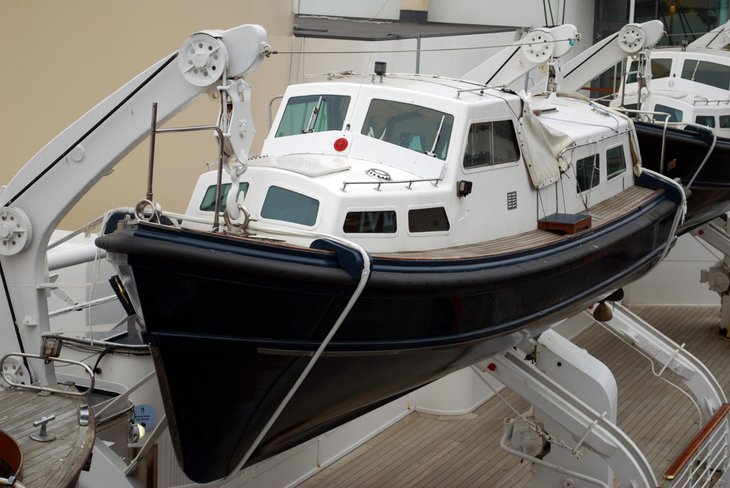
The Royal Yacht Britannia is one of Britain's most popular attractions associated with the monarchy. Over the years, the Queen has welcomed heads of state and famous people from around the world to this luxurious vessel. After more than 40 years serving the Royal Family, the 60-year-old yacht was sent to Leith, Edinburgh's port area, as the centerpiece of the Britannia Visitor Centre.
Once aboard, you'll learn about the history of this and other royal yachts as you explore the ship's five main decks. Highlights include the Royal Apartments and bedrooms; the lovely sun lounge; and the onboard Royal Deck Tea Room, where you can stop for tea and cakes.
For those wanting to spoil themselves with a luxury getaway, consider a stay aboard the former lighthouse ship, the Fingal, docked adjacent to the royal yacht.
6. National Museum of Scotland

Since opening in 2011, the National Museum has become one of Scotland's most popular attractions, and one of the best things to do for free in Edinburgh. Welcoming over two million visitors each year, it incorporates collections from a number of Edinburgh's older museums, with highlights including national archaeological collections; medieval artifacts; and displays focusing on natural history, geology, art, science, and technology.
In its 16 galleries, containing more than 8,000 artifacts, are Dolly the sheep — the world's first cloned mammal — as well as some of Elton John's more elaborate stage costumes. Traditional museum displays also include material from Ancient Egypt and the infamous Maiden, an early form of guillotine. There's plenty to see and do here, so expect to spend at least three or four hours exploring. Guided tours are available, and two restaurants are located on-site.
The Museum of Edinburgh is also worth a look, and features fascinating displays related to the city's long and rich history. So, too, is the Surgeons' Hall Museum. Set in the Royal College of Surgeons, this fascinating museum features collections relating to medicine and surgical procedures.
7. Royal Botanic Garden Edinburgh

Founded in 1670, the Royal Botanic Garden Edinburgh (RBGE) is the second oldest such garden in Britain. It's also one of the largest, and boasts an impressive 13,200 different plant species. Within its magnificent 70 acres are a herbarium with a collection of over three million specimens; Britain's biggest palm house; a tropical house with exotic orchids; an alpine house; a terraced moorland garden; a heather garden; and an extensive arboretum with rare giant trees from the Himalayas, North America, and China.
Other highlights are the woodland garden, with its colorful azaleas, hydrangeas, camellias, and rhododendrons; an aquatic house, with tropical water plants such as the pink water lily from India; and touring displays in the Exhibition Hall.
For a special festive treat, visit for the spectacular light displays over the Christmas period. A variety of educational programs are also available for those wanting a more immersive experience.
8. Princes Street and Gardens

Busy Princes Street is the New Town's main thoroughfare. It extends for almost a mile and is lined with colorful gardens and elegant shops, including the tradition-conscious Jenners of Edinburgh, founded in 1838 and one of the world's oldest department stores.
Also good for shopping is the Princes Mall, popular with its small shops set among fountains and cafés and plenty of places to browse. As well as these temples to consumerism, you'll find restaurants, from fast food to gourmet bistros.
Of interest to those keen on genealogy is New Register House, home to the Scottish National Archives, some of which date as far back as the 13th century. Princes Street's historic landmarks include the 200-foot-tall Sir Walter Scott Monument and the David Livingstone Memorial, a memorial to the missionary and African explorer.
When you're done with all that shopping and history, head for Princes Street Gardens, home to the world's oldest floral clock (1903). From here, you're also afforded spectacular views of Edinburgh Castle, which overlooks the gardens.
9. Camera Obscura & World of Illusions

A combination of Edinburgh history, city views from a new perspective, and experience with optical illusions, the Camera Obscura & World of Illusions is an attraction that certainly appeals to all ages. The centerpiece, set in a Victorian rooftop room, is a pinhole camera that projects live moving images of Edinburgh onto a viewing table. The panorama is created by a combination of mirror and lenses, and it has been entertaining people here since 1853.
The rest of the experience will challenge your faith in your own vision, with a hall of mirrors, a vertigo-inspiring spinning vortex, 3-D holograms, and a whole range of optical experiences
10. Scottish National Gallery & Portrait Gallery

Paintings of Scotland's leading historic figures from the 16th century to the present day can be seen in the Scottish National Portrait Gallery, one of Edinburgh's three major art galleries. The highlight of the gallery's 65,000-plus pieces is the huge processional frieze showing Scotland's most famous personalities, including Robbie Burns, Sir Walter Scott, Sean Connery, Robert Louis Stevenson, Mary Stuart, and Bonnie Prince Charlie, among others. The gallery is also home to the Scottish National Photography Collection.
Founded in 1859, the Scottish National Gallery is the country's second major art collection and displays Scotland's biggest collection of European paintings and sculptures. Its collection includes works from the Renaissance period right up to the Post-Impressionists.
Tours, lectures, and even art classes are available for visitors to enjoy, along with a restaurant. A handy shuttle bus service is also available that connects these two galleries with the Scottish National Gallery of Modern Art (see below).
11. Scottish National Gallery of Modern Art (Modern One)

The Scottish National Gallery of Modern Art — also known as "Modern One" — is another must-visit for art enthusiasts. Here, you'll find displays of paintings by Henri Matisse and Pablo Picasso; surrealistic works by Rene Magritte, Joan Miró, and Max Ernst; and contemporary paintings by Bruce McLean, Callum Innes, and Gwen Hardie.
The gallery is also well-known for its impressive collection of sculptures. Notable examples are works by Henry Moore, Barbara Hepworth, and David Hockney. The extensive grounds of this impressive gallery are also worth exploring.
Across the road is what's come to be known as "Modern Two," housed in an old hospital built in the 1830s. Here, you'll see works by Surrealists, including sculptor Eduardo Paolozzi, as well as an impressive recreation of his original London studio. A number of works by Dada are also on display.
If you plan on seeing both locations, as well as the National Gallery and Portrait Gallery, there's a lot of art (and walking) to experience, so you may want to spread your visits over a couple of days.
12. St. Giles Cathedral

Consecrated in 1243, St. Giles Cathedral — also known as the High Kirk of Edinburgh — is Edinburgh's principal church. It's also one of the city's most popular places to visit, attracting upwards of a million visitors each year.
The current structure was built in the 1300s and is notable for its impressive 161-foot-tall central tower with its eight arched buttresses. These form a huge crown (the Crown Steeple), which has become a favorite backdrop for photos and selfies. Interior highlights include memorials to the dead of WWI; lovely stained-glass windows; and a statue of John Knox, leader of the Protestant Reformation (his former home, 45 High Street, is close by and contains a museum).
The Thistle Chapel is also worth checking out and is best known for its oak carvings; heraldic emblems; and seals of the "Knights of the Thistle," Scotland's oldest order of knights. Sir Robert Lorimer designed the chapel in 1911, and it's a superb example of the modern Gothic style. Fun things to do while visiting the cathedral include joining a rooftop tour or enjoying an afternoon choir concert.

13. Calton Hill and the Scottish National Monument

Calton Hill provides a panoramic view of the city, with Princes Street, the castle, and the Old Town silhouetted against Arthur's Seat. To the east and north you can see the Firth of Forth and the docks at Leith. At the foot of the hill stands the 13th-century Royal High School, where Sir Walter Scott was once a pupil.
Perhaps the most important of Edinburgh's many memorials is the impressive National Monument on Calton Hill, erected to remember the dead from the Napoleonic Wars. Henry Playfair designed the memorial using the Parthenon in Athens as his inspiration.
Work began in 1822, but the project had to be abandoned due to lack of money. Nelson's Monument was unveiled in 1816 after Horatio Nelson's victory at the Battle of Trafalgar.
Opposite Calton Hill stands a memorial to famed Scottish poet, Robert Burns. For a spectacular memento of your Edinburgh vacation, be sure to snap a few shots from here over the city at sunset.
14. Greyfriars Church and Greyfriars Bobby

Located at the south end of picturesque Candlemakers Row, Greyfriars Church is a must-visit when in Edinburgh. Here, you'll find the city's oldest graveyard, the final resting place for a number of celebrated Scots, including poet Allan Ramsay (1686-1758). The first "National Covenant," directed against Charles I's attempt to impose the constitution of the Anglican Church on Scotland, was signed here in 1638, under which framework the church would be subjected to the power of the state.
Buried within the Covenanters Prison is James Hutton, considered by many as the father of modern geology. Perhaps the most famous name associated with the church, however, is Greyfriars Bobby. In 1858, this Skye terrier loyally followed the coffin of his master, John Gray, to the graveyard and until his death 14 years later refused to leave. A kennel was built for him to shelter in, and a famous landmark outside the church is a statue of Bobby erected in 1873.
If visiting on Thursday, be sure to spend time enjoying one of the regular afternoon concerts. A museum is located on-site, and guided tours are available.
15. Edinburgh Zoo
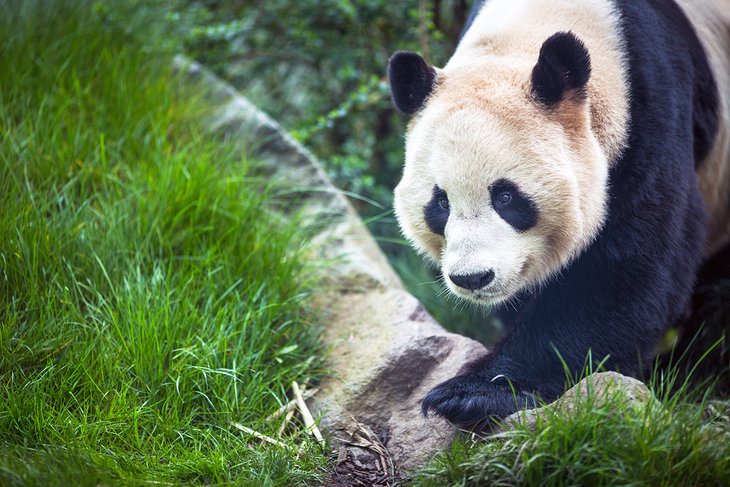
Set on 82 acres of land on the edge of Edinburgh, Edinburgh Zoo was established in 1913 and remains one of the top things to do for families visiting the city.
The zoo boasts a diversity of creatures from around the globe, some of whom were born and raised here through its successful breeding programs. Edinburgh Zoo has the distinction of being the only UK zoo park to house koalas and pandas, and was the first to breed penguins. Among its other "star" animals are a troop of chimps and wallabies, as well as an exhibit of smaller creatures, such as amphibians and insects, in an area called "Wee Beasties."
Those wanting to broaden their zoo experience can opt to participate in a variety of special events and animal interaction opportunities, including the popular "keeper experiences," which offer a fun behind-the-scenes look at the day-to-day care of animals.
Also fun are the "Animal Antics" shows, which provide a fascinating insight into the training and care of a variety of species. There's a great garden area to explore, too, plus a number of casual food options and a gift shop.
Address: Royal Zoological Society of Scotland, 134 Corstorphine Road, Edinburgh
16. The Museum of Childhood

Not just for kids, the Museum of Childhood includes excellent collections of old toys, including model trains, dolls, and games from around the world. But it's more than just a place full of old toys (as much fun as they are). The museum — the first of its kind when it opened in the early 1900s — explores other aspects of growing up, including a fun look at schooldays, trends, and fashions.
Adding to the authenticity is a re-creation of a Victorian streetscape complete with outdoor toys, as well as an opportunity to dress up in period costumes and play the kinds of games our ancestors would have enjoyed.
17. Dynamic Earth: Edinburgh's Science Centre
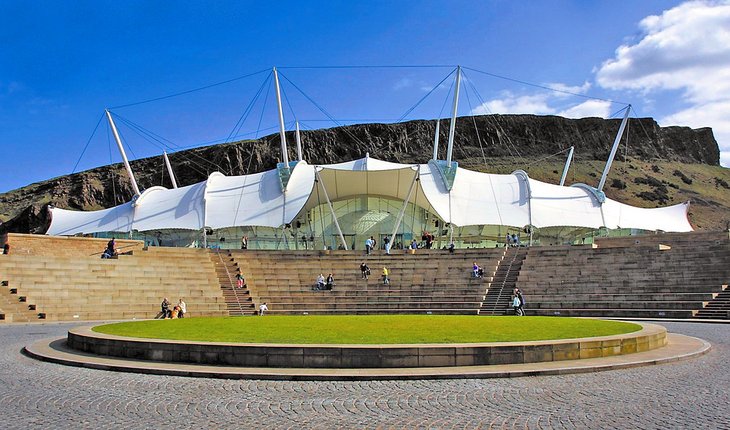
Dynamic Earth is a multi-media presentation that takes visitors on a 500-million-year journey through the Earth's history. Using hi-tech gadgetry and superb special effects, its displays realistically portray natural events such as volcanoes, tropical rainstorms, and glaciation.
Located at the foot of Arthur's Seat near Holyrood Park, this unique science center is housed in an ultra-modern tent-like structure and is particularly fun for kids. And thanks to facilities like the excellent 360-degree Showdome, with its 3D movies, it's as entertaining as it is educational.
The museum's latest addition is 4Dventure flight simulator, where visitors explore evolution and the diversity of the world's climates by "flying" through time and space.
18. The Real Mary King's Close
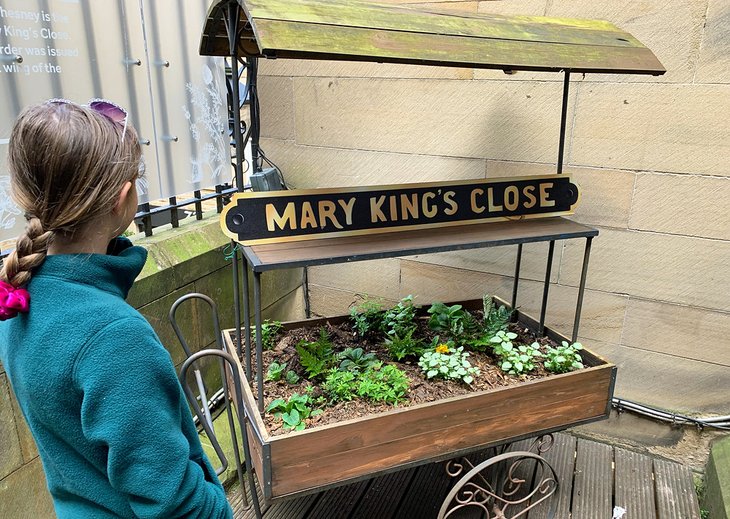
One of the newest attractions in Edinburgh, The Real Mary King's Close offers visitors a fascinating glimpse into one of the oldest sections of the Royal Mile. Located under the historic Old Town area, Mary King's Close was buried and closed after being partly dismantled in the 1700s to make way for the Royal Exchange. This network of narrow streets, now underground, was once a vibrant neighborhood lined with tenement homes, and has long been the subject of myths of ghosts and murder.
Visitors can now join fun tours led by costumed guides that lead you to some of the best preserved areas of this fascinating underground world. Along the way, you'll learn how, during the time of the plague, some 300 residents were sealed up and forgotten about, so legend has it.
Displays and exhibits are also used to show what the area once would have looked like, as well as sharing details of life during the 17th century. (Editor's Note: Advanced booking is recommended, especially during the busy summer season.)
Ghost tours can also be booked at the Edinburgh Vaults, a series of underground storage chambers built in the 1780s. You can also get a taste for life during medieval times at the popular Edinburgh Dungeon, another underground attraction, this time located on East Market Street.
19. John Knox House & Scottish Storytelling Centre

Located on the Royal Mile a short distance from the castle, the John Knox House & Scottish Storytelling Centre attraction is a treat for anyone interested in Scotland's rich cultural heritage. It was built in 1470 and is said to be the one time home of the protestant reformer after which it's named.
A highlight of a visit is exploring the exhibits and displays related to the Scottish Reformation, a pivotal moment in the country's history. Other notable features include a well-preserved hand-painted ceiling from this period and carvings from the 1800s. Guided tours are available.
The adjoining Scottish Storytelling Centre is also worth a visit. Billed as a "home for Scotland's stories," this popular venue hosts regular performances by musicians and actors, as well as readings by leading Scottish writers. A variety of workshops and learning opportunities are also available, with programs aimed at all ages. For a truly memorable experience, book one of the venue's professional storytellers for a personalized story-telling session or workshop. A café is also located on-site.
(thanks to: www.planetware.com)
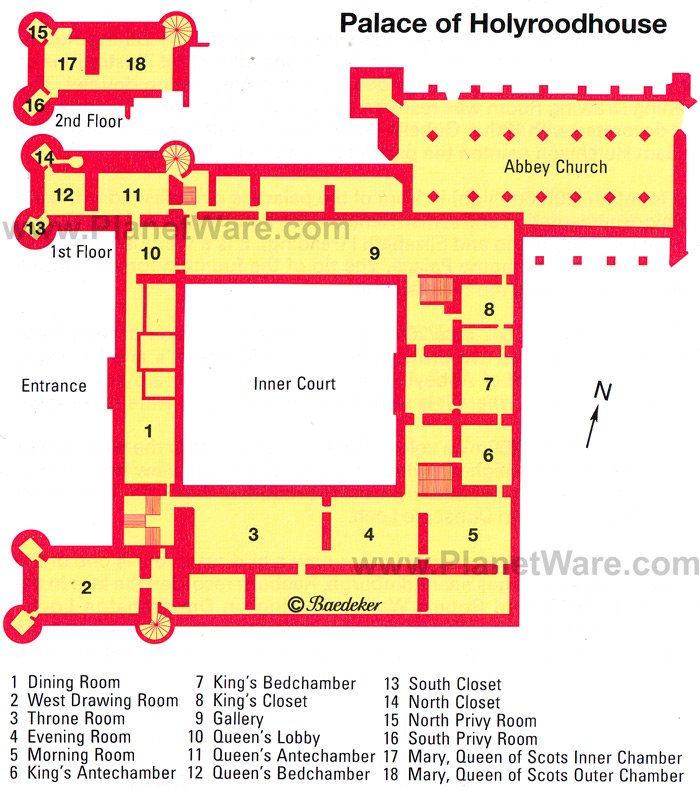
Comments
Post a Comment